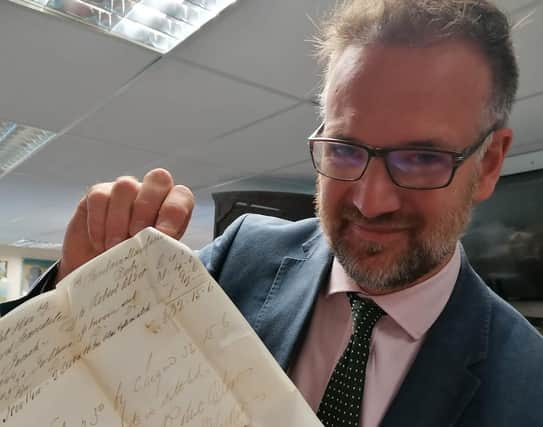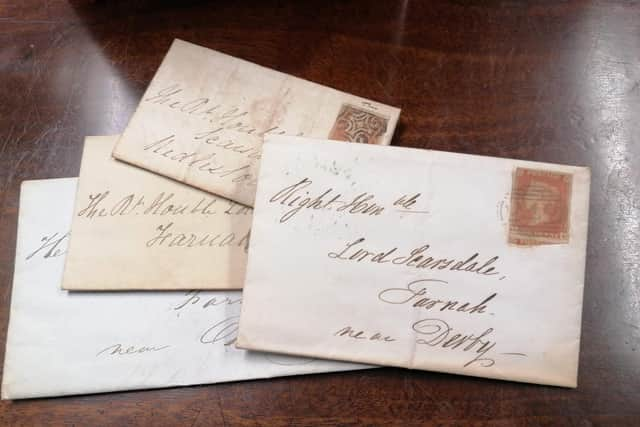Centuries-old letters to Lord Scarsdale are found in Derbyshire home


A handful of ancient letters from the 1800s, discovered in a Derby house by Hansons’ valuer Karl Martin, were addressed to the Right Honourable Lord Scarsdale of Farnah. Scarsdale is a key name in the county’s peerage history, more usually connected to Kedleston Hall.
Aristocrat or not, those 175-year-old letters had something in common with us all, something that made me smile. They related to purchases – the precursors to the copious receipts so many of us tuck away in cupboards, purses and wallets today.
Advertisement
Hide AdAdvertisement
Hide AdHowever, they were much more personal and elegant than the dull printed versions we see now.


These were handwritten invoices and one, penned in 1844, related to Derby china costing £32.15.6. The letter was written and signed on behalf of Robert Bloor – a name many will be familiar with.
Bloor was the man who restored Derby Porcelain’s reputation when he took control of the factory in 1811 and began to build a team of fine painters.
The invoice, which stated the account had been settled, demonstrated the nature of personal service back then. The kingpin of Derby’s porcelain factory was more than happy to have his name on the invoice. But there again, Lord Scarsdale may have been one of his best customers. After all, back in 1844 £32.15.6 equated to more than £4,000 in today’s money.
Advertisement
Hide AdAdvertisement
Hide AdAnother Lord Scarsdale invoice related to items purchased from Derby Draper & Hatter located at 19 and 20 Corn Market. The firm was also a ‘silk mercer, furrier, hosier and glover’. Their esteemed client purchased hats for £3.17.0.
Letters from centuries ago are fascinating for many reasons, not least the fact that there were no envelopes back then. Instead, letters were neatly folded and sealed. Paper was used sparingly.
It’s interesting to note the simplicity of the address too – ‘Farnah, near Derby’. Farnah Hall was a grand country property, near Duffield. It was home to Lord Scarsdale in the mid-1800s. White’s Directory of 1857 describes Farnah as ‘a large elegant mansion situate in a fine park, near the Wirksworth road, the property and seat of the Right Hon Lord Scarsdale.
The Curzon family - Lord Scarsdales - are more normally associated with Kedleston Hall, a grand mansion near Derby now in the hands of the National Trust. Farnah Hall appears in the Kedleston Deeds in 1780.
Advertisement
Hide AdAdvertisement
Hide AdFarnah Hall was sold to the Curzons around 1800. The last house to stand on the site was constructed around 1738 and consisted of a five by four bay, two-and-a-half storey twin-range block.
It was put up for sale in 1857, but was let until 1916. In 1925 it was found to be structurally unsound and was used as a target for Home Guard grenade training from 1941. By the 1980s it was a ruined shell and overgrown.
Nevertheless, these letters survive, an unusual glimpse of Derbyshire’s history and heritage. The letters are currently being assessed ahead of auction.
We are inviting entries for our October Fine Art Auction. Book a free valuation or home visit by emailing [email protected].